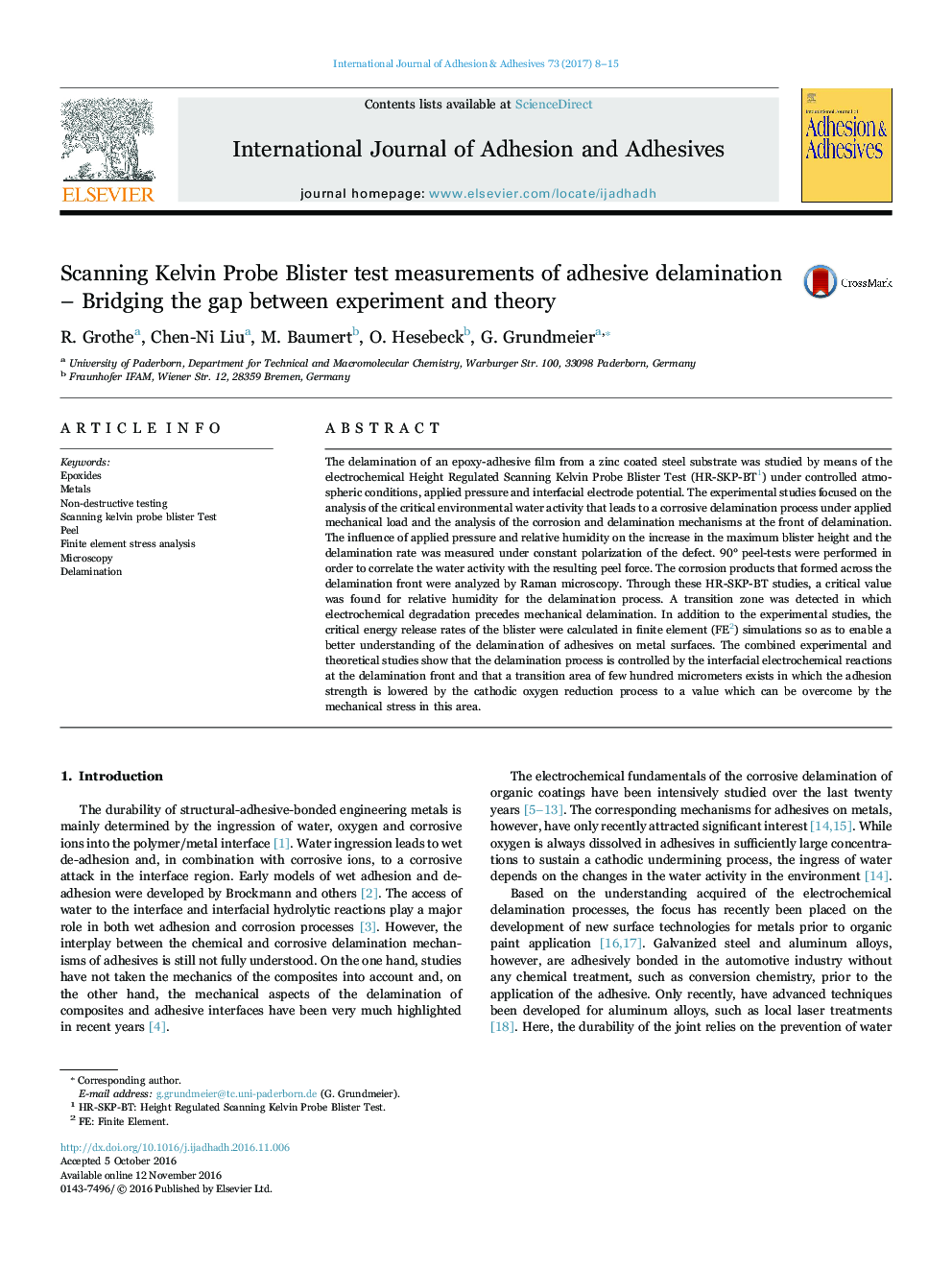| کد مقاله | کد نشریه | سال انتشار | مقاله انگلیسی | نسخه تمام متن |
|---|---|---|---|---|
| 5014837 | 1463464 | 2017 | 8 صفحه PDF | دانلود رایگان |
عنوان انگلیسی مقاله ISI
Scanning Kelvin Probe Blister test measurements of adhesive delamination - Bridging the gap between experiment and theory
ترجمه فارسی عنوان
اسکن کردن کلوین پروب اندازه گیری تست های بالینی از تجزیه چسب - پر کردن شکاف بین آزمایش و تئوری
دانلود مقاله + سفارش ترجمه
دانلود مقاله ISI انگلیسی
رایگان برای ایرانیان
کلمات کلیدی
اپوکسیدها، فلزات، تست غیر مخرب، تست بلستر پروب آزمایشگاهی، پوست کندن، تجزیه و تحلیل استرس عنصر محدود، میکروسکوپ، لایه لایه شدگی،
موضوعات مرتبط
مهندسی و علوم پایه
سایر رشته های مهندسی
مهندسی مکانیک
چکیده انگلیسی
The delamination of an epoxy-adhesive film from a zinc coated steel substrate was studied by means of the electrochemical Height Regulated Scanning Kelvin Probe Blister Test (HR-SKP-BT1) under controlled atmospheric conditions, applied pressure and interfacial electrode potential. The experimental studies focused on the analysis of the critical environmental water activity that leads to a corrosive delamination process under applied mechanical load and the analysis of the corrosion and delamination mechanisms at the front of delamination. The influence of applied pressure and relative humidity on the increase in the maximum blister height and the delamination rate was measured under constant polarization of the defect. 90° peel-tests were performed in order to correlate the water activity with the resulting peel force. The corrosion products that formed across the delamination front were analyzed by Raman microscopy. Through these HR-SKP-BT studies, a critical value was found for relative humidity for the delamination process. A transition zone was detected in which electrochemical degradation precedes mechanical delamination. In addition to the experimental studies, the critical energy release rates of the blister were calculated in finite element (FE2) simulations so as to enable a better understanding of the delamination of adhesives on metal surfaces. The combined experimental and theoretical studies show that the delamination process is controlled by the interfacial electrochemical reactions at the delamination front and that a transition area of few hundred micrometers exists in which the adhesion strength is lowered by the cathodic oxygen reduction process to a value which can be overcome by the mechanical stress in this area.
ناشر
Database: Elsevier - ScienceDirect (ساینس دایرکت)
Journal: International Journal of Adhesion and Adhesives - Volume 73, March 2017, Pages 8-15
Journal: International Journal of Adhesion and Adhesives - Volume 73, March 2017, Pages 8-15
نویسندگان
R. Grothe, Chen-Ni Liu, M. Baumert, O. Hesebeck, G. Grundmeier,
